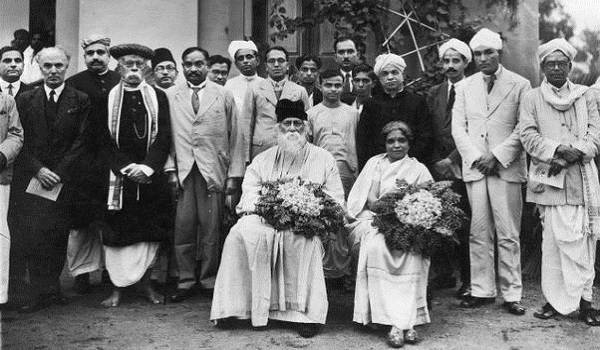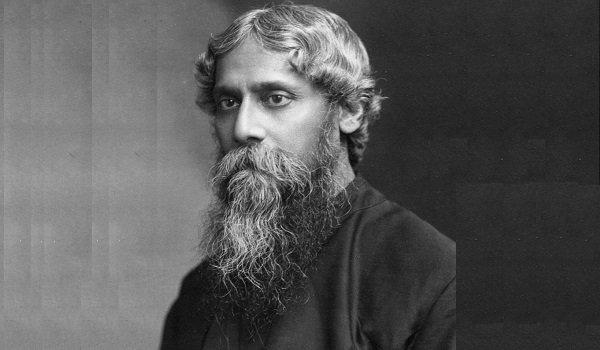Key Takeaways
Rabindranath Tagore birth anniversary was marked on 7th May.
About Rabindranath Tagore
- Rabindranath Tagore, who composed the National Anthem of India and won the Nobel Prize for Literature, was a multi-talented personality in every sense.
- He was a Bengali poet, Brahmo Samaj philosopher, visual artist, playwright, novelist, painter and a composer.
- He was also a cultural reformer who modified Bengali art by rebuffing the strictures that confined it within the sphere of classical Indian forms.
- Though he was a polymath, his literary works alone are enough to place him in the elite list of all-time greats
- Childhood and Early Life
- Rabindranath Tagore was born on 7th May 1861 to Debendranath Tagore and Sarada Devi in Calcutta.
- At a very young age, he was part of the Bengal renaissance
- He was also a child prodigy as he started penning down poems at the age of 8.
- By the age of sixteen he had started publishing poems under the pseudonym Bhanusimha.
- He also wrote the short story, ‘Bhikharini’ in 1877 and the poem collection, ‘Sandhya Sangit’ in 1882
- He drew inspiration by reading the classical poetry of Kalidasa and started coming up with classical poems of his own.
- His stay at Amritsar paved the way for him to learn about Sikhism
- Education
- Traditional education began in Brighton, East Sussex, England, at a public school.
- He was sent to England in the year 1878
- He was later on enrolled at the University College in London, where he was asked to learn law.
- But he once again dropped out and learned several works of Shakespeare on his own.
- After learning the essence of English, Irish and Scottish literature and music, he returned to India
- Establishment of Santiniketan
- With an idea of establishing an experimental school in his father’s property (land in shantiniketan), he shifted base to Santiniketan in 1901 and founded an ashram there
- The classes there were held under trees and followed the traditional Guru-Shishya method of teaching.
- In the meantime, his works started growing more and more popular amongst the Bengali as well as the foreign readers.
- This eventually gained him recognition all over the world and in 1913 Rabindranath Tagore was awarded the prestigious Nobel Prize in Literature, becoming Asia’s first Nobel laureate.
- Literary Works
- Short stories:
- He started his writing career with ‘Bhikharini’.
- Some of his famous short stories include ‘Kabuliwala’, ‘Kshudita Pashan’, ‘Atottju’, ‘Haimanti’ and ‘Musalmanir Golpo’ among many other stories.
- Novels:
- His works spoke about the impending dangers of nationalism among other relevant social evils.
- His novel ‘Shesher Kobita’ narrated its story through poems and rhythmic passages of the main protagonist.
- Other famous novels of his include ‘Noukadubi’, ‘Gora’, ‘Chaturanga’, ‘Ghare Baire’ and ‘Jogajog’.
- Poems:
- Rabindranath drew inspiration from ancient poets like Kabir and Ramprasad Sen and thus his poetry is often compared to the 15th and 16th Century works of classical poets.
- Some of his best works include ‘Balaka’, ‘Purobi’, ‘Sonar Tori’ and ‘Gitanjali’.
- Songs (Rabindra Sangeet)
- His songs are known as rabindra sangeet (“Tagore Song”)
- In 1971, Amar Shonar Bangla became the national anthem of Bangladesh.
- It was written – ironically – to protest the 1905 Partition of Bengal along communal lines: cutting off the Muslim-majority East Bengal from Hindu-dominated West Bengal was to avert a regional bloodbath.
- Jana Gana Mana was written in shadhu-bhasha, a Sanskritised form of Bengali, and is the first of five stanzas of the Brahmo hymn Bharot Bhagyo Bidhata that Tagore composed.
- It was first sung in 1911 at a Calcutta session of the Indian National Congress and was adopted in 1950 by the Constituent Assembly of the Republic of India as its national anthem.
- Short stories:
- Tagore’s Stint as an Actor
- Tagore wrote many dramas, based on Indian mythology and contemporary social issues
- When he was 20 years old, he not only did the drama ‘Valmiki Pratibha’, but also played the titular character.
- Tagore the Artist

- Rabindranath Tagore took up drawing and painting when he was around sixty years old.
- His paintings were displayed at exhibitions organized throughout Europe
- He was also influenced by the craftwork of the Malanggan people, belonging to northern New Ireland.
- He was also influenced by Haida carvings from the west coast of Canada and woodcuts by Max Pechstein.
- Rabindranath Tagore took up drawing and painting when he was around sixty years old.
- His paintings were displayed at exhibitions organized throughout Europe
- He was also influenced by the craftwork of the Malanggan people, belonging to northern New Ireland.
- He was also influenced by Haida carvings from the west coast of Canada and woodcuts by Max Pechstein.
Political Views

- Though Tagore renounced nationalism, he also vouched for the Indian independence through some of his politically charged songs.
- He also supported Indian nationalists and publicly criticized European imperialism.
- He also criticised the education system that was forced upon India by the English.
- In 1915, he received knighthood from the British Crown, which he later renounced citing the massacre held at Jallianwala Bagh.
- He said that the knighthood meant nothing to him when the British failed to even consider his fellow Indians as humans.
- Yet he lampooned the Swadeshi movement; he rebuked it in The Cult of the Charkha, an acrid 1925 essay.
- Tagore wrote songs lionising the Indian independence movement. Two of Tagore’s more politically charged compositions, “Chitto Jetha Bhayshunyo” (“Where the Mind is Without Fear”) and “Ekla Chalo Re” (“If They Answer Not to Thy Call, Walk Alone”), gained mass appeal, with the latter favoured by Gandhi.
Content Source – The Hindu



